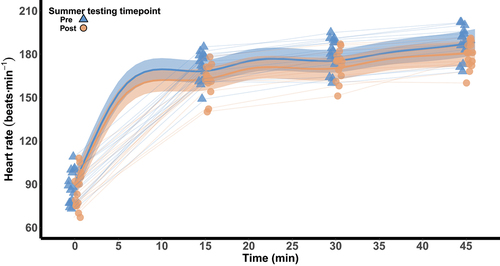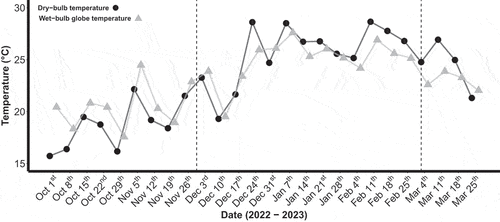Figures & data
Table 1. Participant characteristics pre- and post-summer, including O2peak and reported Tanner stage.
Table 2. Gastro-intestinal and skin temperature, heart rate, hemoglobin mass, and plasma and blood volume at rest pre- and post-summer.
Figure 1. Gastro-intestinal temperature during 45 min of walking at 60% O2peak in 40°C and 30% relative humidity pre- and post-summer. The thick lines represent the population predicted means surrounded by 90% credible intervals. Model estimates are based on the arithmetic mean of
O2peak. The model was implemented using data from 5-min intervals. Observed data are visualized at 15-min intervals.

Figure 2. Heart rate during 45 min of walking at 60% O2peak in 40°C and 30% relative humidity pre- and post-summer. The thick lines represent the population predicted means surrounded by 90% credible intervals. Model estimates are based on the arithmetic mean of
O2peak. The model was implemented using data from 5-min intervals. Observed data are visualized at 15-min intervals.

Table 3. Gastro-intestinal temperature, heart rate, whole-body sweat loss, and sweat sodium concentration during the heat response test pre- and post-summer.
Data availability statement
The data and associated code used for analyses are available from the corresponding author upon reasonable request.

